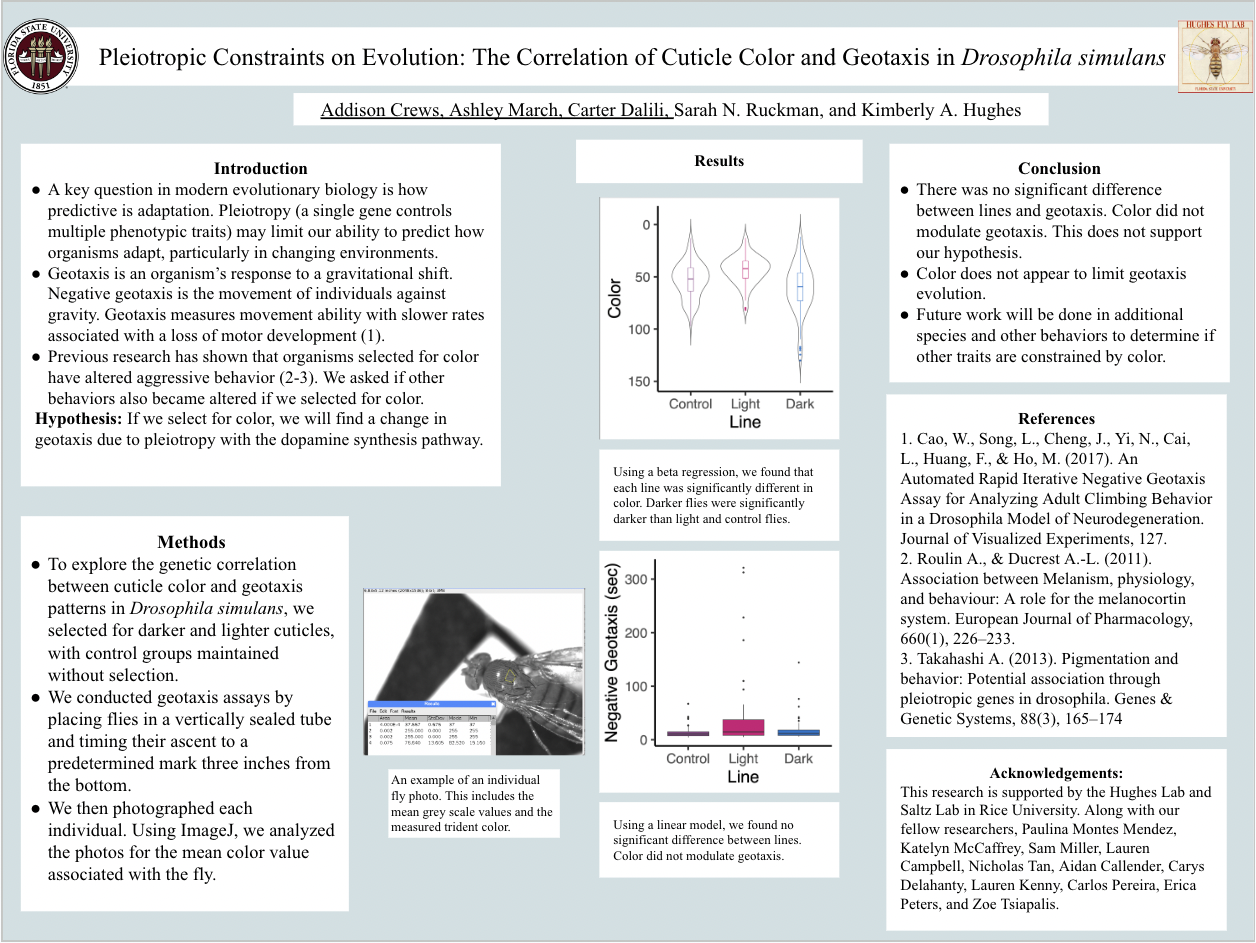Research Symposium
24th annual Undergraduate Research Symposium, April 3, 2024
Addison Crews Poster Session 3: 1:30 pm - 2:30 pm/318
BIO
Hello, my name is Addison Crews. I am originally from Nashville, Tennessee. I am a second year Biological Sciences student here at FSU. I currently plan on attending veterinary school after my undergraduate. I began working in the Hughes Lab in September 2022 and I've loved the experience. I have a piqued interest in field research within the realm of animal behavior and genetics.
Pleiotropic Constraints on Evolution: The Correlation of Cuticle Color and Geotaxis in Drosophila simulans
Authors: Addison Crews, Sarah RuckmanStudent Major: Biological Sciences
Mentor: Sarah Ruckman
Mentor's Department: Biology Mentor's College: College of Arts and Sciences Co-Presenters: Ashley March, Carter Dalili
Abstract
One long standing question in evolutionary biology is whether single genes that control multiple traits (pleiotropy) results in limitations on adaptive evolution. If it does, then our ability to predict adaptation (e.g., in the face of changing environments) is compromised. We are using a much-discussed correlation between body coloration and aggressive behavior as a system to address this question. Having found the predicted genetic correlation between cuticle color and aggressive behavior in Drosophila simulans using artificial selection (unpublished data), we then asked if any other behaviors co-evolved under selection on cuticle color. For example, the dopamine synthesis pathway is plausibly related to color, aggression, and other behaviors, such as geotaxis level. Negative geotaxis is the movement of individuals against gravity. This is a measure for general activity and motor development. Efficiency of geotaxis has been used to measure movement ability, with a slower rate of geotaxis associated with a loss of motor development and neurodegeneration. We therefore measured geotaxis ability of flies (D. simulans) selected for darker and lighter cuticle color. To measure geotaxis, flies are placed in a vertically sealed tube and timed for how quickly they climb to a predetermined mark at 3 inches from the bottom of the tube. Results suggest that time to climb to the top of the tube is faster in the dark-selected lines, suggesting that genetic correlations do constrain the independent evolution of cuticle color and behavior.
Keywords: Pleiotropy, Geotaxis, Color, Drosophila simulans


